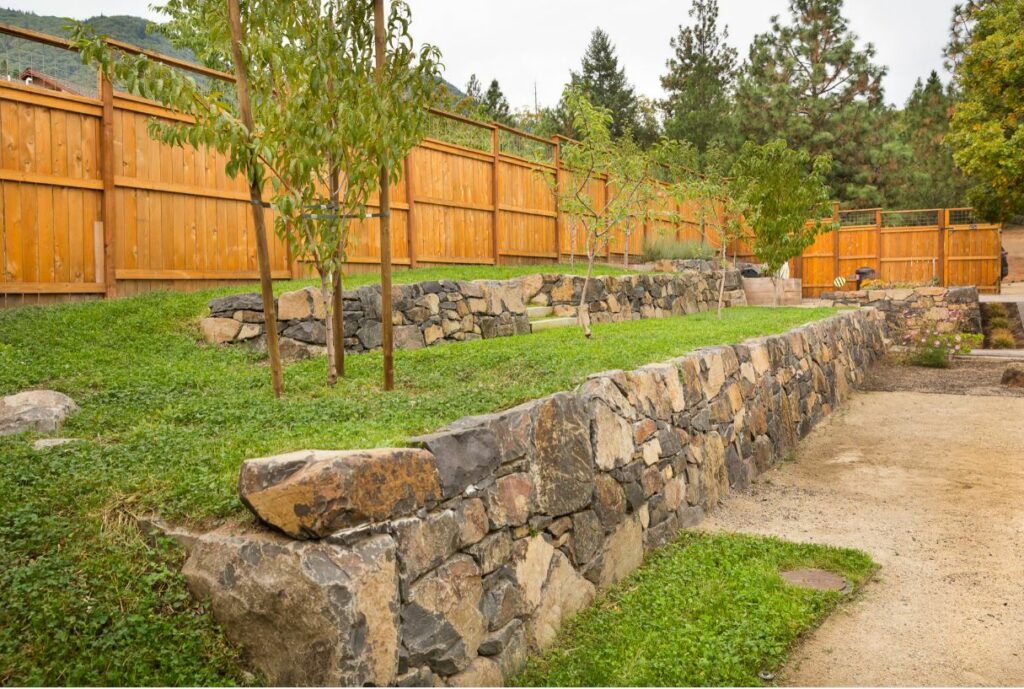
The purpose of Retaining Wall
- admin
- 0
- Posted on
A retaining wall, also known as a garden wall, can be any structure that is designed to hold water, earth, or other liquid. An important component of any well-designed landscape design, a retaining wall can greatly improve the appearance of a garden or yard and is an essential element of landscape construction. A well-constructed garden wall can increase the value of your home! Concrete is a popular material for garden walls.
One of the most common uses of retaining walls in a yard is as an edging system. You’ll find that they are particularly useful around flower beds and over flower beds. You will find that landscaping around such structures can be extremely rewarding, especially considering the positive impact it can make on the landscape’s overall aesthetic appeal. A retaining wall can be used as a border to your yard or garden and can improve the landscape’s beauty. You can protect your turf from erosion and preserve the lushness beneath your plants and flowers by simply installing one of these structures.
Another common purpose of retaining wall is to prevent erosion from slopes and landscapes. In many cases, a retaining walls can provide the necessary stopping point for sliding snow and/or ice. In addition to this, by providing a break in the sloping surface, it also provides a place for an activity like sunbathing. A retaining wall of good quality will not erode completely if it is well constructed. As a result, your landscape will remain safe and sound throughout the winter months and you’ll be able to enjoy your summertime garden until the spring comes.
A retaining wall is also important for landscape drainage. Drains are essential because they remove excess water from soil to support the growth of plants. In most cases, these drains are built within the walls themselves, but poor construction and design can make them ineffective or even detrimental. Some drains can actually encourage root growth, which can clog or damage your landscaping. A good drain system will remove water from the soil so that it channels it away safely from the foundation.
Proper drainage can reduce the chance of flooding. As we all know, floods cause tremendous damage to properties. Floods can often cause property damage, wash away valuable items, flood the surrounding areas, and make homes and buildings uninhabitable for a long time. The impact of flooding on a structure can be very extensive and often irreversible. Installing a drainage system can help reduce the likelihood of such catastrophic events. A well-drained landscape drainage system will channel rainwater away form the foundation, so it drains into smaller canals and not through windows, doors, or other openings.
Poor construction can also lead to “weep holes”. A weephole is basically a depression below the retaining walls where water can accumulate. This can happen during storm season when heavy rains are possible due to high winds, flash floods or heavy rainfall. When the ground in this depression becomes wet, it can expand and fill with water, creating a safe harbor for mold and mildew. In the long run, this can significantly damage your home’s exterior.
Inadequate soil quality can also cause problems for your landscaping. Certain soil types are better suited for certain types of landscaping. Clay soils that are well-drained are great for small-scale landscaping projects like flowerbeds and herb gardens, but they are too porous for large-scale projects like attached retaining walls. Clay soils are also not very flexible and don’t compact well. They break easily and have a tendency to break apart even under low soil compaction.
Untreated piles can also cause cracking, flaking, breaks and separation of slab and base material. These problems can seriously damage your property if left unattended. Fortunately, you can fix these problems by repairing or replacing the wall. You can also repair or replace damaged areas if the concrete slab is reinforced concrete (reinforced using steel reinforcement). Reinforcement will improve the quality of the wall and make it more durable, which will result in improved aesthetics. By fixing these problems in your existing concrete wall, you can improve the structure’s lifespan and reduce costs associated with repairs.